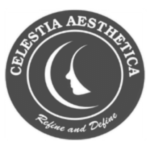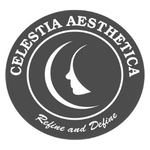Rhinoplasty, commonly referred to as a “nose job,” is a popular cosmetic surgery that can help improve the appearance and function of the nose. While it can deliver transformative results, many people wonder about the safety of the procedure. In this blog post, we’ll explore the safety aspects of rhinoplasty, including the risks and benefits associated with this surgery.
The Safety of Rhinoplasty
Rhinoplasty is generally considered a safe surgical procedure when performed by a skilled and experienced plastic surgeon. Like any surgery, it carries some inherent risks, but advances in medical technology and surgical techniques have significantly improved the safety and outcomes of rhinoplasty. Here are key factors to consider:
1. Choosing the Right Surgeon: The safety and success of your rhinoplasty largely depend on your choice of surgeon. It’s crucial to select a board-certified plastic surgeon with expertise in rhinoplasty procedures. A qualified surgeon will conduct a thorough evaluation of your health, discuss your expectations, and create a personalized surgical plan.
2. Anesthesia: Rhinoplasty is typically performed under general anesthesia, administered and monitored by an experienced anesthesiologist. While anesthesia carries some risks, the presence of skilled professionals minimizes these risks. Your medical history, including allergies and reactions to anesthesia, will be carefully considered.
3. Surgical Techniques: There are two main techniques used in rhinoplasty: open and closed. Open rhinoplasty involves a small external incision on the columella (the strip of skin between your nostrils), while closed rhinoplasty is performed entirely within the nostrils. The choice of technique depends on the complexity of the procedure and the surgeon’s preference. Both techniques can be safe when executed by a proficient surgeon.
4. Risks and Complications: Rhinoplasty, like any surgery, has potential risks and complications. These can include infection, bleeding, scarring, anesthesia-related issues, dissatisfaction with the results, or the need for revision surgery. However, these risks are relatively low, and most complications are manageable.
5. Recovery and Aftercare: Following your surgeon’s post-operative instructions is essential for a safe recovery. You may experience swelling, bruising, and discomfort in the days and weeks following surgery. It’s important to avoid strenuous activities and follow your surgeon’s recommendations for a smooth healing process.
Benefits of Rhinoplasty
Despite the potential risks, rhinoplasty offers numerous benefits, making it a desirable option for many individuals:
1. Enhanced Self-Esteem: Rhinoplasty can boost self-confidence by addressing aesthetic concerns related to the nose. A more harmonious and balanced facial appearance can lead to improved self-esteem.
2. Improved Function: Rhinoplasty is not just about aesthetics; it can also improve breathing and overall nasal function. Deviated septums and other structural issues can be corrected during the procedure.
3. Personalization: Rhinoplasty is highly customizable. Patients can work with their surgeon to achieve the specific results they desire while maintaining facial harmony.
4. Long-Lasting Results: The results of rhinoplasty are generally long-lasting. While the nose may continue to change subtly over time due to aging, the core improvements from the surgery tend to remain.
Conclusion
Rhinoplasty can be a safe and effective way to enhance both the appearance and function of your nose when performed by a qualified surgeon in a reputable medical facility. It’s crucial to understand the potential risks and benefits associated with the procedure and carefully select your surgeon. By doing so, you can increase the likelihood of a successful and safe rhinoplasty experience that delivers the desired results and helps boost your self-esteem. Always consult with a board-certified plastic surgeon to discuss your unique case and address any concerns regarding the safety of rhinoplasty.






